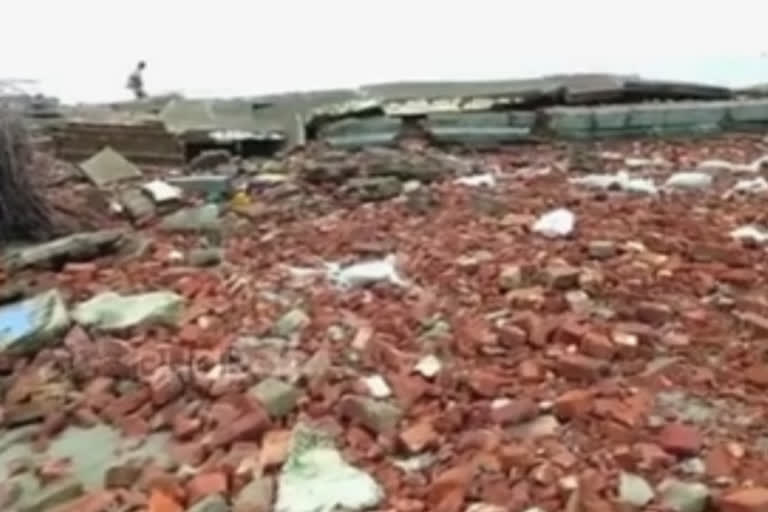Sagar Island (West Bengal): The administration of South 24 Parganas district of West Bengal is worried about the future of the Kapil Muni Temple with bank erosion continuing in Sagar Island. The original temple was engulfed by the sea way back. Now the future of the new temple is also at stake.
The sound of bank erosion is constantly audible. Though this problem is quite old, there has been no solution. As a result, the future of the Kapil Muni Temple is at stake. Chances are high that the new temple will also be engulfed by the sea if the erosion continues. Sagar Island will also lose its relevance in the tourism map of the state. For the last three years, the district administration had taken initiative to arrest this erosion. But still the problem has persisted. Questions are being raised in the administrative circles on why the initiatives to arrest erosion did not work out.
In order to arrest the erosion, the administration planted coconut trees over across a over a one-kilometre stretch in this coastal zone. But many of these trees got engulfed in the seas, leading to further tension.
District administration sources said that on an average around 100 to 200 feet of the river bank is getting engulfed by the sea every year. The state government took initiative to arrest this erosion in 2019. The Gangasagar- Bakkhali Development Board and state public works department jointly took the initiative. Sunderbans Development Minister, Bankim Hazra said that the state government is determined to protect the Kapil Muni Temple from erosion.
Also read: Kapil Muni temple chief priest criticises CAA, says humanity is religion
"Already the master plan is in place. The administrative approval has also come. The state environment department has also given the necessary approval. However, we are yet to receive the approval from the Union government. Once we get that the work will start. Cyclone Yash devastated the area," he said.
South 24 Parganas' district magistrate Dr P Ulaganathan said the successive Amphan and Yash cyclones devastated the area.
"Already the sea bank erosion has started. This has become a major challenge for the administration. Once we get the CRZ approval from the Union government it will be forwarded to the environment department. After that we will be able to start the work," he said.
Historians, however, differ over the destruction of the original temple because of the erosion. An article on Sagar Islands in 1862 he referred to the templeas a grand old banyan tree under which there were idols of Lord Rama and Lord Hanuman. Pilgrims used to write their names and addresses on the external side of the temple. There was a well there called Neelkund. The pilgrims used to drink the water of the well.
Historians believe that the temple was constructed by Queen Satyabhama in around 430 AD. However, the temple got engulfed in the sea. The second temple was constructed in around 1,500 AD. After that six successive temples were destroyed because of the erosion. The final temple was constructed in 1973 at a cost of over Rs 1,00,000. Locals feel that the given the manner in which bank erosion is continuing, the destruction of the current temple is just a matter of time.
Lakhs of pilgrims assemble at Sagar Island in January every year on the occasion of Makar Sankranti. Locals feel that the current temple can be saved only if the state and central governments work together.



